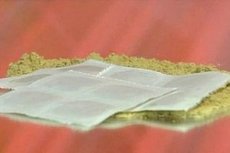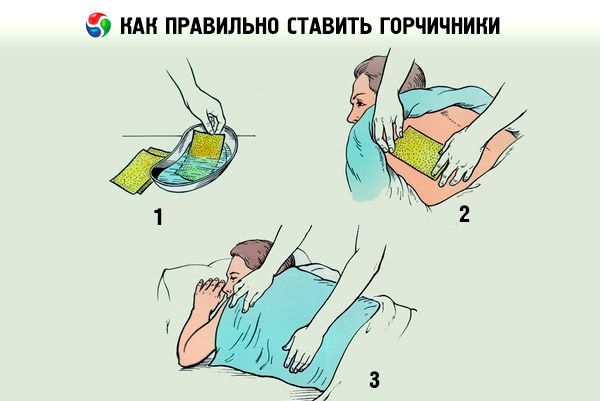
All iLive content is medically reviewed or fact checked to ensure as much factual accuracy as possible.
We have strict sourcing guidelines and only link to reputable media sites, academic research institutions and, whenever possible, medically peer reviewed studies. Note that the numbers in parentheses ([1], [2], etc.) are clickable links to these studies.
If you feel that any of our content is inaccurate, out-of-date, or otherwise questionable, please select it and press Ctrl + Enter.
Mustard therapy for acute and obstructive bronchitis in adults and children: treatment regimen
Medical expert of the article
Last reviewed: 06.07.2025

Bronchitis is an inflammatory process that occurs in the mucous membrane of the so-called tracheobronchial tree. This disease belongs to the group of infectious diseases, with which there is a strong cough, as well as intoxication of the body. To relieve these symptoms, there are various medical procedures, among which is a time-tested method - mustard plasters for bronchitis. They are considered one of the most effective methods, as they effectively warm the sternum, eliminating the cough.
Can you put mustard plasters on for bronchitis? You can put mustard plasters on for bronchitis, the only thing is that you need to follow the technique of putting them on, and also know if the patient has any contraindications to this procedure.
In the process of treating bronchitis with mustard plasters, congestion in the lungs is eliminated. This occurs due to the redirection of blood through anastomoses - from the inflamed part of the lungs to the vessels under the skin. Mustard plasters also speed up the process of removing phlegm from the bronchi and strengthen the immune system.
Preparation
Preparation for the procedure is as follows: you need to take a blanket, a towel, the mustard plasters themselves, and pour warm water into a bowl. The skin on the back and chest should be cleaned and slightly moistened with water. Mustard plasters are applied when the patient is in a lying position - they are first placed on the chest, and then on the back.
Where to put mustard plasters for bronchitis?
Mustard plasters for bronchitis are placed on the chest (5-10 cm below the collarbones; it is important to try to ensure that the area above the heart is minimally affected), as well as the back (mustard plasters are placed between the shoulder blades and under them - this increases the effectiveness of the effect).
Mustard plasters should not be placed on birthmarks, mammary glands, bone protrusions, kidneys, or the heart area. They should also be placed so that they do not touch each other.
Technique: how to apply mustard plasters correctly for bronchitis?
How to apply mustard plasters for bronchitis? The application technique is quite simple:
- First, you need to dip the mustard plaster in a bowl of water for a few seconds, and then apply it to the skin on your chest or back;
- After all the mustard plasters have been applied, it is necessary to blot each one with a damp cloth or sponge;

- Next, cover the area with the mustard plasters with a dry towel;
- Then the patient needs to be covered with a blanket.
After the mustard plasters have been removed, the remaining mustard must be carefully and gently removed from the skin to prevent further skin irritation. The patient must then be wrapped in a blanket again and allowed to lie down for some time.

Mustard plasters for bronchitis in children
Mustard plasters can be used for bronchitis in children, but it should be taken into account that the procedure should be shorter than for adults - only 4-6 minutes, no more.
Mustard plasters should be used with special caution if the child has obstructive bronchitis, as this form can cause the development of obstructive syndrome with the development of asphyxia. Since this disease is usually of an allergic nature, the use of mustard plasters can only worsen the situation. Sometimes their use leads to the transformation of bronchitis into bronchial asthma - this happens because the essential oils released can usually provoke the appearance of allergic symptoms.
Children are not allowed to put mustard plasters on both the back and chest in one procedure, although there is no exact answer as to which of these places would be more effective. Therefore, to achieve results, it is recommended to alternate: put on the chest one day, and on the back the next, and repeat this every other day.
You can also use simple mustard powder as a substitute – make a mustard bath in which the child can steam his feet. You need 100 g of powder per 10 liters of water, and the water temperature should be within 38°C. In this case, you need to cover him with a warm blanket, and after the procedure, put him to bed and give him hot tea to drink.
Mustard plasters for bronchitis in adults
The action of mustard plasters begins after 5-10 minutes (in general, this usually depends on their quality, as well as the condition of the patient's skin and his individual perception). Basically, mustard plasters for bronchitis in adults are put on for a maximum of 15 minutes. After removing them, the skin is wiped with a damp cloth and then wiped dry. Then the patient is wrapped in a blanket and left to lie down for a while.
Mustard plasters for acute bronchitis
Acute bronchitis usually develops as a result of acute respiratory viral infections and flu. Risk factors include: hypothermia, inhalation of harmful vapors or gases, smoking. This disease is often preceded by repeated inflammatory diseases of the upper respiratory tract (for example, tracheitis).
For acute bronchitis, mustard plasters are placed on the upper chest, as well as on the area between the shoulder blades.
Mustard plasters for obstructive bronchitis
In case of obstructive bronchitis, mustard plasters are not recommended, but if you decide to use them, they should be applied in the classic way: on the chest and back. A small child should be treated with a mustard wrap method - a towel is soaked in a water-mustard solution, and the patient is wrapped in it.
How many days and how often can you apply mustard plasters for bronchitis?
Mustard plasters for bronchitis can be applied for no more than 4-5 days in a row, and the procedure cannot be performed more than once a day. But it is better not to apply mustard plasters to children every day - for them, it is recommended to perform the procedure every other day.
Contraindications
Mustard plasters are often used to treat bronchitis, but it is important to remember that there are some contraindications for their use. For example, this procedure cannot be performed in the case of tuberculosis, malignant tumors, or bleeding. They also cannot be used to treat children under 6 years of age, because their skin is too thin and therefore prone to burns.


 [
[